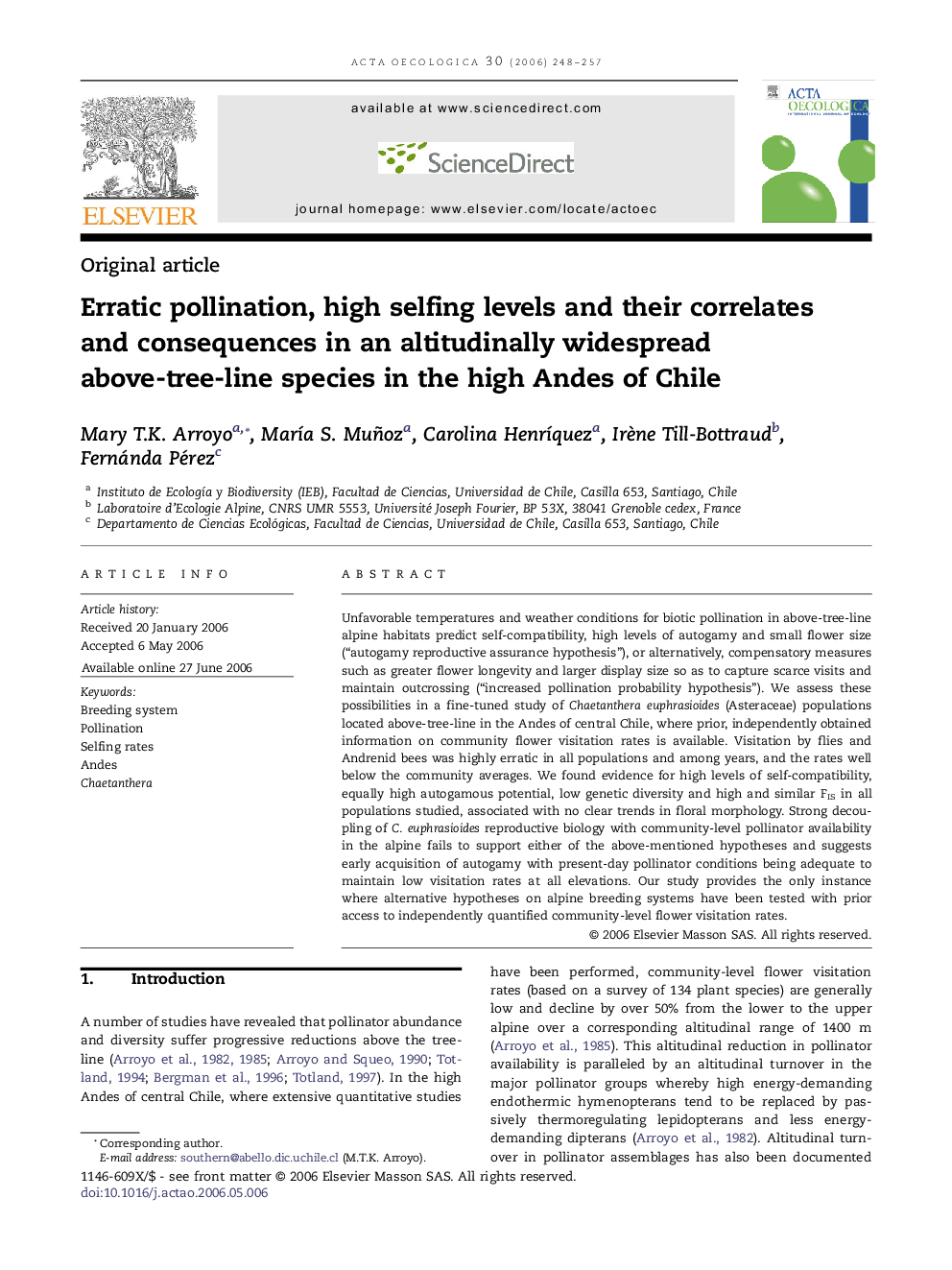| Article ID | Journal | Published Year | Pages | File Type |
|---|---|---|---|---|
| 4381643 | Acta Oecologica | 2006 | 10 Pages |
Abstract
Unfavorable temperatures and weather conditions for biotic pollination in above-tree-line alpine habitats predict self-compatibility, high levels of autogamy and small flower size (“autogamy reproductive assurance hypothesis”), or alternatively, compensatory measures such as greater flower longevity and larger display size so as to capture scarce visits and maintain outcrossing (“increased pollination probability hypothesis”). We assess these possibilities in a fine-tuned study of Chaetanthera euphrasioides (Asteraceae) populations located above-tree-line in the Andes of central Chile, where prior, independently obtained information on community flower visitation rates is available. Visitation by flies and Andrenid bees was highly erratic in all populations and among years, and the rates well below the community averages. We found evidence for high levels of self-compatibility, equally high autogamous potential, low genetic diversity and high and similar FIS in all populations studied, associated with no clear trends in floral morphology. Strong decoupling of C. euphrasioides reproductive biology with community-level pollinator availability in the alpine fails to support either of the above-mentioned hypotheses and suggests early acquisition of autogamy with present-day pollinator conditions being adequate to maintain low visitation rates at all elevations. Our study provides the only instance where alternative hypotheses on alpine breeding systems have been tested with prior access to independently quantified community-level flower visitation rates.
Keywords
Related Topics
Life Sciences
Agricultural and Biological Sciences
Ecology, Evolution, Behavior and Systematics
Authors
Mary T.K. Arroyo, MarÃa S. Muñoz, Carolina HenrÃquez, Irène Till-Bottraud, Fernánda Pérez,
